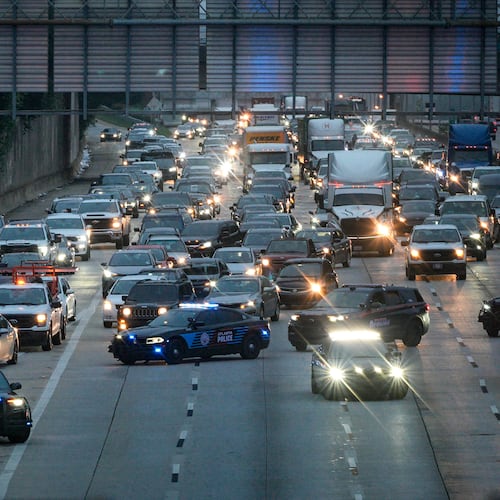One of our favorite memes is a photo of traffic and the sentence, “Atlanta is an hour away from Atlanta.”
If you’ve ever had to get somewhere in a hurry, you knew not to take Interstate 285, or the Connector, or Interstate 75, or Georgia 400, or ... you get the idea. But, according to a new analysis, Atlanta drivers have it better than many other cities when you factor in more than just the number of cars on the road.
Credit: Clanton, Nancy (AJC-Atlanta)
Credit: Clanton, Nancy (AJC-Atlanta)
“The COVID-19 pandemic has drastically changed commuting primarily by increasing the number of Americans who work from home,” Elizabeth J. Traut, Ph.D. and assistant research professor at the Larson Transportation Institute at Pennsylvania State University, told WalletHub. “It has also reduced transit capacity due to social distancing requirements and reduced transit ridership due to concerns about exposure.”
According to the Bureau of Transportation Statistics, 87% of daily trips take place in personal vehicles. In addition, during the COVID-19 pandemic, fear of public transportation has led to more reliance on personal vehicles than usual, and car sales increased 9% in the first quarter of 2021 compared to last year.
To determine 2021′s Best and Worst Cities to Drive In, WalletHub compared a sample of the 100 most populated U.S. cities across four key dimensions: cost of ownership and maintenance, traffic and infrastructure, safety and access to vehicles and maintenance.
The financial website then evaluated those dimensions using 30 relevant metrics, each graded on a 100 point scale, with a score of 100 representing the most favorable conditions for drivers.
Atlanta, believe it or not, finished in the top half, finishing No. 36 with a score of 57.13. The city ranked in the top 10 for two dimensions, and near the bottom for one.
- Cost of ownership and maintenance: No. 30
- Traffic and infrastructure: No. 10
- Safety: No. 95
- Access to vehicles and maintenance: No. 4
Which cities are best to drive in? Well, three of the top five are in North Carolina — Raleigh (No. 1), Greensboro (No. 3) and Winston-Salem (No. 4). Second place went to Lincoln, Nebraska, and fifth place to Corpus Christi, Texas.
At the bottom of the list was Oakland, California, with a score of just 34.20.
According to Shams Tanvir, Ph.D. and assistant professor of civil and environmental engineering at California Polytechnic State University, most people drive because they have to, not because they want to.
“Local authorities should give people the option of not driving,” he said. “Half of all the trips in the US are three miles or less, yet 72 percent of those are driven in automobiles. Cities should build more, safer, and more convenient bike paths and walkways. The stigma around public transportation investment should be removed. Preference should be provided to low-income, marginalized communities. We simply cannot build out of this congestion problem and the road safety epidemic.
About the Author
The Latest
Featured


